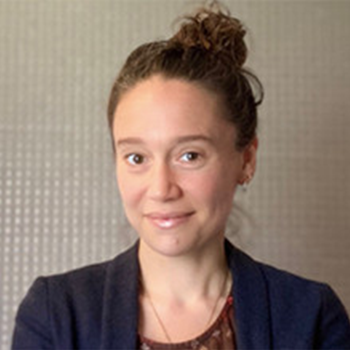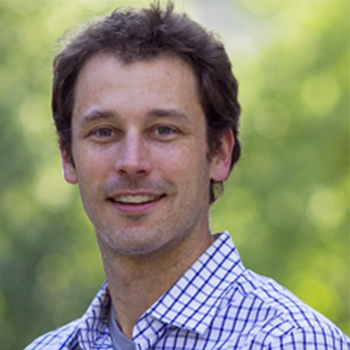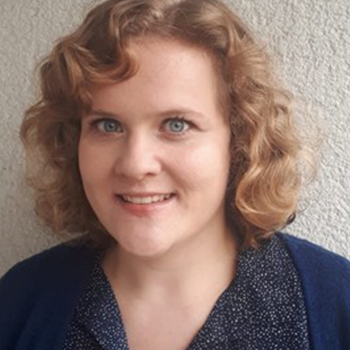Priority Theme Spotlight: Alexandra Hartman, Benjamin S. Morse, and Sigrid Weber



Author: Jaclyn Leaver
Theme: Displacement, Migration, and Integration
In today’s Priority Theme Spotlight we spoke with EGAP member Alexandra Hartman (University College London), along with co-authors Benjamin S. Morse (Social Impact) and Sigrid Weber (University College London), about their article “Violence, Displacement, and Support for Internally Displaced Persons: Evidence from Syria,” published in the Journal of Conflict Resolution. We discussed how experiences of violence can shape support for internally displaced people (IDPs) and refugees in conflict-affected areas.
This project looks at what motivates members of a host population in an active conflict zone, in this case Syria, to incur the costs and risks of hosting refugees and internally displaced persons (IDPs). Why did you choose this location?
Alexandra Hartman, Benjamin S. Morse, and Sigrid Weber: Our interest in this topic began when doing fieldwork for a completely different project in Eastern Liberia, where we observed Liberian host communities being really generous towards Ivoirian refugees. This was in really resource-constrained communities and the generosity was moving and striking. We did a first project there and found evidence that war-time experience shaped generosity (Hartman and Morse 2018). In that research, we used survey data on patterns of refugee hosting as well as a conjoint survey experiment to show that people who survived violence themselves were less likely to discriminate against members of outgroups when asked about potentially hosting displaced people. And in the survey data on actual hosting, survivors hosted far greater numbers of refugees, including great numbers of Muslim refugees (a religious outgroup in Eastern Liberia). That experience pushed us to ask whether the finding would hold up when conflict was ongoing and when existing theories, such as parochial altruism, suggested people would be less generous or even antagonistic towards ethnic or religious outgroups. The research partner we worked with approached us and told us that they were also interested in understanding the dynamics of IDP hosting and that they had access to a population in Syria. Working in such a context is both an incredible opportunity and a great challenge. We are grateful that the project came together.
As part of this study, you surveyed over 2,000 Syrians in northern and southern parts of the country to learn whether they were currently hosting IDPs and what would shape which additional IDPs they would host, if needed. What were the primary findings from this project?
AH, BM, and SW: Using survey data on actual hosting patterns, we find that Syrians previously exposed to violence were more likely to host IDPs. Using a conjoint experiment embedded in the survey to measure hosting preferences over different types of IDPs, we show that individuals exposed to violence also preferred to host sick and vulnerable IDPs and outgroup IDPs from the Kurdish ethnic minority.
More generally, we show that conflict-affected populations can be incredibly generous even during brutal and active conflicts. This is not surprising when you think about it, but it isn’t often the narrative we have about conflict-affected populations, who are sometimes framed more in terms of their vulnerability as opposed to the agency they have to support and help other people. Indeed, much of the help provided during humanitarian crises is within conflict-affected populations, a fact that is often overlooked in the discourse on the importance of external humanitarian aid.
We also show that when individuals make decisions about who to help, both identity characteristics and perceived need of displaced people matter. We argue that experiences of violence can create a bridging identity that leads them to support people from other social groups but, in Syria, this does not occur for all social groups. We argue that politics and group identity matter for when people are generous. Although survivors hosted greater numbers of refugees and exhibited greater willingness to host vulnerable IDPs and Kurdish outgroup IDPs, they were less willing to host members of other groups, including Christians. One explanation lies in the politics of the Syrian crisis and assumptions that individuals make about the politics and allegiances of different groups.
Taken together our results suggest that past experience with violence can create a bridging identity that leads them to support people from other groups, but that there are limits to this phenomenon, particularly when political alignments associate those in need with violence perpetrated during the conflict.
How do these findings complement the existing literature on the legacies of violence on individual and group behavior? Does this study contribute to any other literature and, if so, how?
AH, BM, and SW: We contribute to the growing literature on the determinants of support for immigrants and refugees (e.g. Hainmueller and Hopkins 2014; Adida, Lo, and Platas 2018). When we did this project, previous research mostly focused on these questions in the Global North. We set out to explore what unfolded in humanitarian settings and when conflict was ongoing.
Our findings also contribute to the literature on the legacies of violence on individual and group-level behavior (e.g. Bateson 2012; Blattman 2009; Voors et al. 2012; Bauer et al. 2016). Whereas previously this literature has tended to treat all outgroups the same, our findings suggest that the legacies of violence are not uniform across ethnic and religious outgroups and that they instead depend on sectarian politics—whereas altruism toward apolitical outgroups may increase in the aftermath of violence, altruism toward outgroups associated with rival parties in the conflict may decrease due to blame attribution, the heightened importance of self-interested security concerns, or other mechanisms associated with parochial altruism.
What are the implications of the project’s findings for aid organizations, governments, and other groups providing assistance to those forcibly displaced by violence in Syria and, if applicable, in other countries around the world?
AH, BM, and SW: The project has implications for providing humanitarian assistance to those forcibly displaced by violence. Our results suggest that under certain conditions, highlighting shared experiences as opposed to group differences may help increase generosity toward those in need. Further research on the potential for this type of public messaging to promote intergroup altruism during and after conflict is needed.